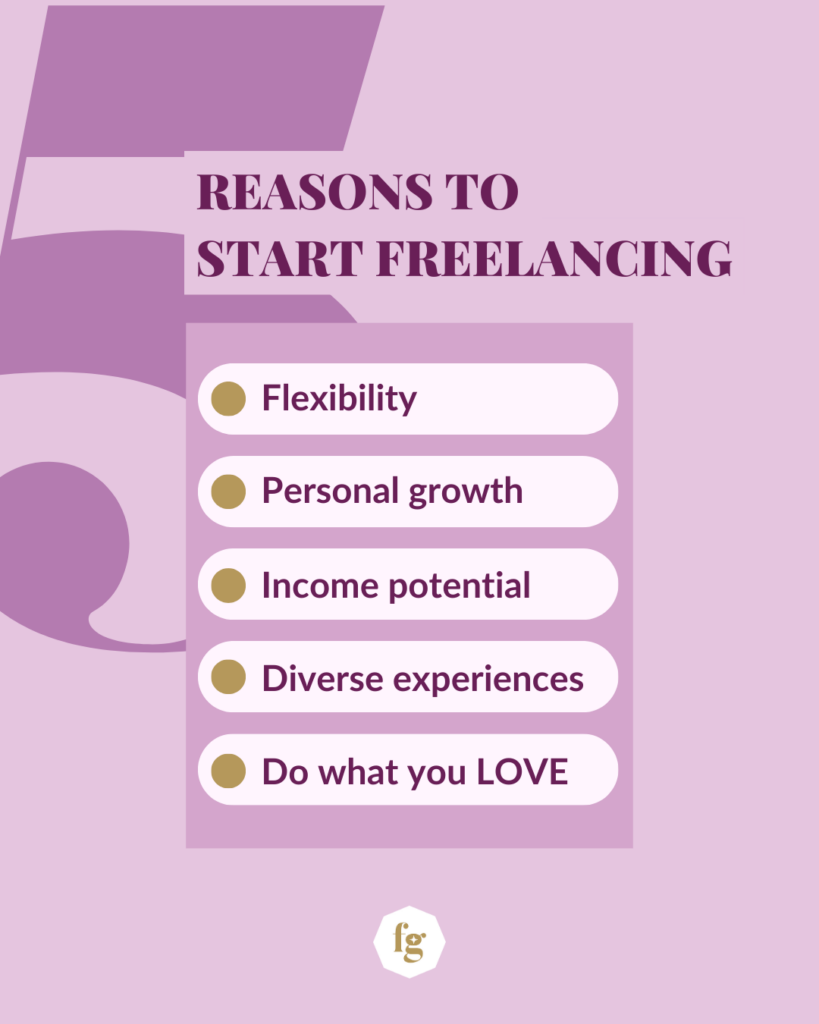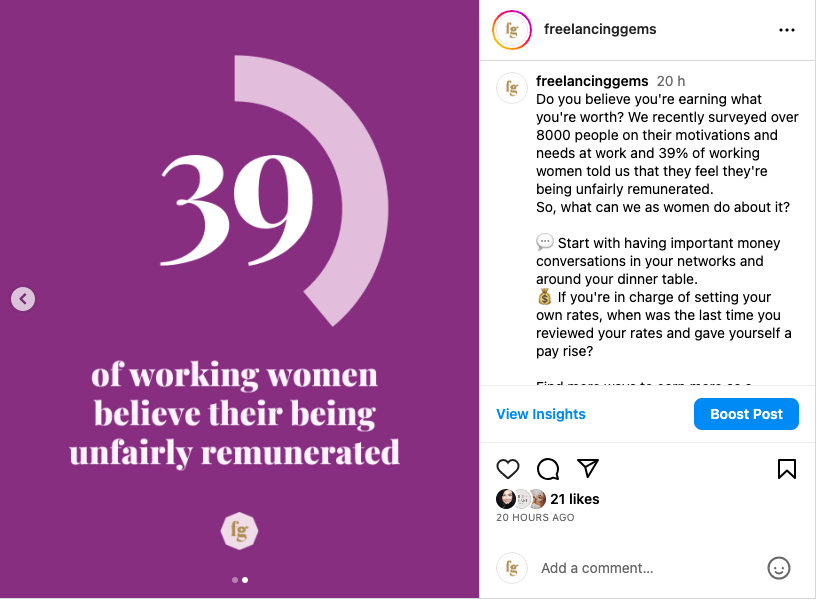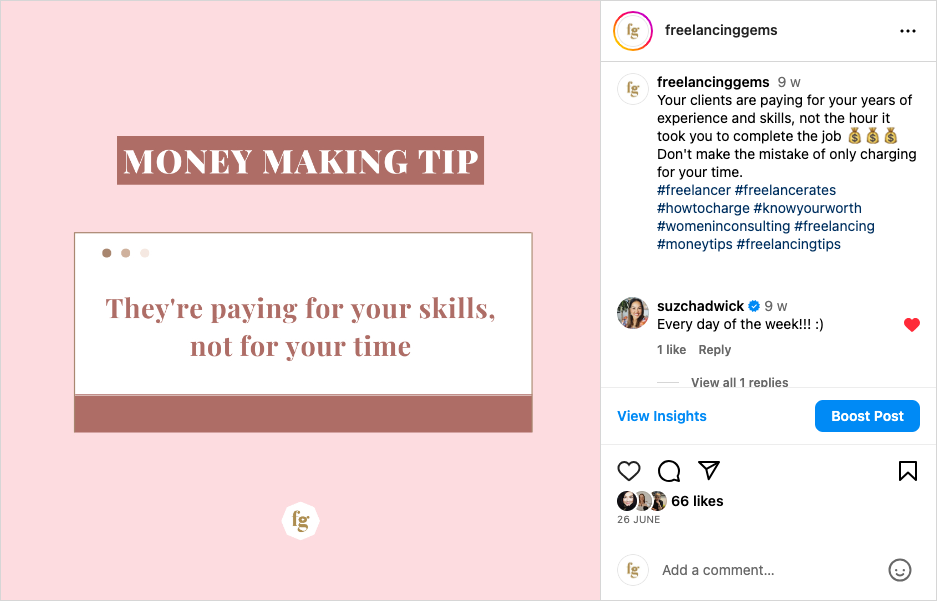Here’s how to charge what you’re worth as a freelancer

Work should be more than just a means to an end… Right?
This year, National Equal Pay Day fell on Friday, 25 August, representing the extra 56 days women must work past the end of the financial year to earn the same as men. It allowed many of us to reflect on our own individual finances, and assess if the work we do is financially worth our while.
Talking about money can feel slightly taboo, but it’s one of the most crucial elements of our career. The question on freelancers’ lips is, “How do we charge what we are worth?”
The Gender Pay Gap
The gender pay gap is a significant concern for economies around the world.
A lack of financial security can lead to a range of negative consequences, including stress and instability. With the rising cost of living and the increasing demand for stability and security, financial wellness has become front of mind for all of us in today’s rapidly changing jobs market.
Commissioned by Freelancing Gems, The New Work Order Report surveyed over 8,000 people on their changing needs and motivations at work. The report found that 39% of women feel unfairly remunerated. It’s eye-opening to understand so many of us feel this way.
Although women won the right to equal pay in 1969, men are still earning more today. Unfortunately, history hasn’t yet changed and at the current rate of progress, working women today will not see the closure of the gap before retirement.
Women in Australia currently earn 87 cents in the dollar when compared to their male counterparts in an equivalent full-time role.
Take this entrenched disparity to the gig economy and the findings aren’t much better. Couple this with the fact women are more likely to shy away from their accomplishments, and it’s unsurprising there’s a negative stigma around self-employed wealth.
It’s a stigma so prevalent that one in three of our survey respondents acknowledge they’ve succumbed to undercharging, including those who would seemingly have unlimited earning capability like the mature and tertiary educated.
The rise of the modern-day freelancer
Since the world changed in 2020, the way we do business today has dramatically evolved. Programs like Slack, Zoom, Teams and ChatGPT are essential to everyday business. Perks like working from home, remote working, mental health days, or four-day work weeks are no longer the exception, but the expectation.
The future of work has changed forever and it seems there’s nothing like a pandemic to make women across all industries and backgrounds ditch their 9 to 5 in favour of the gig economy. The New Work Order report found that 36% are considering starting a side hustle or freelancing in the next 12 months.
So what does the modern female freelancer look like and what inspired her to leave behind the security of a full-time job?
Well, the majority of freelancers are aged around 25 to 44 – enough time to get established in their industry and begin pursuing a career that marries their passion and skills with their lifestyle. Sydney and Melbourne have long been heralded the ‘freelancing hubs’ of Australia, and that’s also reflected in our members, with 90% of freelancers located across the eastern seaboard.
For most, flexibility is among the top reasons for moving into freelancing. For others, it is the control and autonomy of working for themselves. Every day being different is a perk for over one-quarter of freelancers, while the income potential poses a significant consideration for almost half of all Freelancing Gems members.
Obvious reasons aside, one freelancer shared her wanderlust was the biggest motivator: “I wanted freedom to work on the road when my husband and I travel Australia”, while another was undeniably multi-passionate and felt she couldn’t combine roles in the corporate world.

The biggest industries for freelancing, consulting and side-hustling
Just like our freelancers, side-hustlers, consultants and sole-traders, some industries are thriving in this new era, while others are struggling. So what’s hot and what’s not for outsourcing?
It’s unsurprising that creatives take the cake (and the brief) when it comes to freelancing and consulting. Those in Marketing, Design and Creative Industries make up almost half of all freelancers at Freelancing Gems, while women in Administration, Human Resources and Finance cover the rest. Additionally, among employers who said they were eager to hire a freelancer in the coming year, these were the top industries, with the majority seeking a marketing freelancer and others needing specialists in professional services.
Interestingly, demand for these professions isn’t expected to slow down any time soon, with our findings echoed in predictions the creative industries will grow 14.3% annually between now and 2026.
Similarly, the majority of employers say they’re reconsidering the need for full-time staff completely, indicating that contract-based, flexible work from freelancers and consultants is more appealing.
Beginner’s guide to freelancing
From freelancing in our pyjamas to consulting from our couch, there are now unlimited options for budding entrepreneurs to make their way in the new era of the 9-to-5, or is it 5-9 now? Either way, just one question remains: “how the heck do I even get started as a freelancer?”
Fear not, ladies! We’ve answered that question with this five-step beginner’s guide to freelancing that every new freelancer needs to follow to set their foundations for success and truly let their light shine! Here’s a snapshot:
# 1 Own your ‘why’: Get crystal clear on why you want to freelance.
Whether it’s the freedom, the excitement, the diversity of the work or simply the fact you can rock up to the couch-turned-office at 10 am wearing fluffy socks without being judged, determine why freelancing lights your fire.
# 2 Nail your ‘what’: Get clear on what you’ll do and who you’ll help.
Saying ‘yes’ to every job when you’re starting out is a great way to build a portfolio, but niching down to your key skills and passions ensures you’ll build a sustainable freelancing business doing what you actually love with no regrets.
# 3 Sort the nitty-gritty: Don’t skip on the important stuff.
Without selecting crucial aspects of your business such as a structure, name, and accounting system from the outset, cracks will begin to show later in your freelancing journey. Instead, take the time now to set off on the right foot by getting your legals and financials in order.
# 4 Find your flair: What makes you special? It’s time to share it.
With the back-of-house aspects of freelancing out of the way, it’s time to differentiate yourself. Of course, this can include your business name, logo, and letterheads, but more importantly, your mission, tone of voice, and customer service. These visual and strategic guidelines set a consistent, clear foundation for all your marketing and communication, and help you shine bright like a diamond with a recognisable brand.
# 5 Set your launch: Why? Owned. Nitty-gritty? Sorted. Flair? Found. All that’s left is the launch.
For a beginner freelancer, setting up a website and official social media account gives you that uber-professional appearance and online presence while allowing you to showcase your special sauce. There are plenty of options for user-friendly, DIY websites that give you that professional look without the ouch of the price tag.
Oh, and while you’ve likely already got your personal social accounts, be sure to separate the fun from the freelance with a business account that’s uniquely yours. And as with anything, consider your strategy behind this, like your goal for the platform, what you’ll post and how often.
From getting clear on your purpose from the get-go to launching with an oh-so-professional online presence, following this expert five-step beginner’s guide to freelancing ensures you’ll set the perfect foundation for your freelancing journey. It’s time to shine bright, gems!
For the go-to checklist on nailing your freelance life from the beginning, download Freelancing Gems’ FREE ‘How to Start a New Business checklist’ here.
How to charge as a freelancer
Okay, so now you’re all set up, your website looks great, clients are knocking on your door (or you’re knocking on theirs) and it’s time to get to work on your first few proposals.
At this stage of the freelancing game, when you’re running your own show, putting a dollar amount to your skills can be pretty daunting. Are you charging enough, too much or underselling yourself and your value?
How do we figure out what we are worth, how to charge as a freelancer, and navigate some of those tough money conversations?
Here are some things to consider:
- Don’t immediately jump to an hourly rate. As Lisa Messenger says, “If I do the job in 30 minutes, it’s because I spent 10 years learning how to do that in 30 minutes. You owe me for the years, not the minutes.”
- Don’t be afraid to talk about money upfront and ask if there is a budget, We can’t be scared to talk about money if we are going to be true money makers,
- Do your research so you can feel confident that your rates are competitive. Remember our members gain immediate access to the Freelancer Rate Guide, covering over 50 roles.
- Prepare to negotiate. Know your bottom, mid and top range so you can be flexible and not miss opportunities.
- Remember that it is okay to say no to work if they can’t afford your expertise. Understand the value you bring to the table and don’t undersell your services.
- Don’t forget the stuff that isn’t so sexy – take into consideration your tax, superannuation and expenses.
Knowing how to charge as a freelancer is so challenging, especially if you have come out of a full-time job. Our major guiding principle to making this path financially sustainable for you is don’t charge what you think people can afford to pay you, charge what you are worth and you will attract the right clients.






